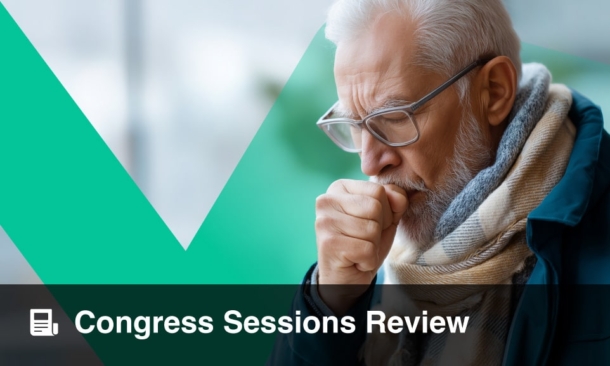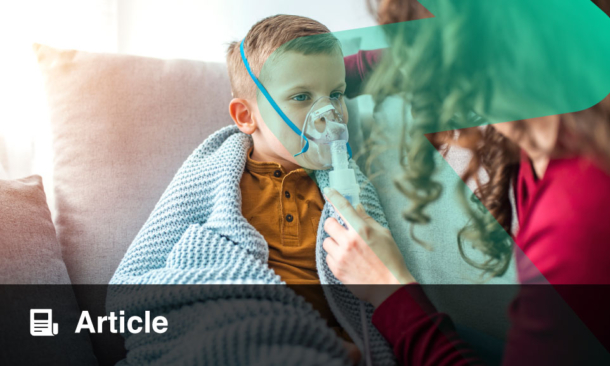Author: *Reid Eggleston1
1. Mayo Clinic, Rochester, Minnesota, USA
*Correspondence [email protected]
Disclosure: The author has declared no conflicts of interest.
![]()
THE American Thoracic Society (ATS) International Conference took place in San Francisco, California, USA, from May 17th–21st, 2025, with over 14,000 attendees from more than 100 countries represented. The conference opened with an address from Kimberly Manning, Grady Hospital, Emory University, Atlanta, Georgia, USA, who is renowned for her contributions to the burgeoning field of narrative medicine. “I think the greatest teachers of all are the patients we have a privilege to care for.” She shared the story of a patient hospitalized for severe pneumonia, who gave a very busy Manning this advice: “One person doing one thing for a person other than themselves goes further than you think.” It was against this backdrop of the impact that pulmonologists and intensivists have on the lives of their patients that ATS commenced. During the conference, several thought-provoking and sometimes practice-changing trials were introduced or reviewed, spanning content ranging from septic shock to lung cancer. Herein, we explore some of the highlights of these discussions.
ASTHMA/COPD
As in prior years, the use of biologic therapies for the treatment of airway disease was a hotly discussed topic.
Sanjay Ramakrishnan, University of Western Australia, Perth, Australia, pointed out that patients receiving treatment for an exacerbation of COPD are more often harmed, rather than helped, by courses of oral corticosteroids. The potential role of biologic therapy for such patients remains unexplored. In light of this, Ramakrishnan and Lauren Eggert, Stanford University, California, USA, presented findings from ABRA, a multicenter, randomized placebo-controlled trial that assessed the effect of a one-time dose of subcutaneous benralizumab (100 mg) at the time of exacerbation on treatment failure and symptoms, in patients who had an elevated eosinophil count (≥300 cells/µL), compared to patients who received standard exacerbation treatment with prednisolone.1 The study included those with both COPD and asthma. The patients studied had severe airway disease, with a median of four exacerbations in the year prior and a baseline serum eosinophil count of 600 cells/µL. The primary outcome is the proportion of patients with treatment failure within 90 days, which favored patients who received benralizumab (cumulative incidence: 45%) compared to standard of care (cumulative incidence: 74%; hazard ratio: 0.39; 95% CI: 0.25–0.6; p=0.003). Eggert conceded that care should be taken in generalizing results to patients with milder asthma, due to the sample’s baseline disease severity.
Eggert also highlighted the knowledge gap in the treatment of patients who have tried and failed other forms of biologic therapy for asthma. She presented findings from the XALOC-1 observational study, which included a cohort that examined outcomes of patients receiving benralizumab for severe eosinophilic asthma after a transition from an alternate biologic medication.2 Most of the patients in this cohort had previously received mepolizumab, and experienced a 73% relative risk reduction in annualized exacerbation rate when switched to benralizumab.
LUNG CANCER
Practice-changing studies that touched on lung cancer included lung nodule diagnostics; a change in tumor, node, metastasis (TNM) staging for lung cancer; and the use of EGFR-targeting therapies for non-small cell lung cancer (NSCLC).
Laura Frye, University of Utah, USA, shared the results of the VERITAS trial, which compared the diagnostic yield of lung nodule biopsy for navigational bronchoscopy to CT-guided transthoracic needle biopsy (TTNB).3 This randomized controlled noninferiority trial, conducted across multiple US sites, demonstrated no difference in yield between the two modalities (76% yield in both groups). However, complications were higher among those who underwent TTNB. Pneumothorax occurred in 3% of patients who underwent navigational bronchoscopy compared to 28% of those undergoing TTNB. Frye remarked that navigational bronchoscopy comes with the added benefit of simultaneous mediastinal lymph node staging versus TTNB.
Frye and Nina Thomas, University of Colorado, USA, also discussed a recent change in NSCLC diagnosis by TNM staging. The 9th edition TNM guidelines now specify that the N2 Stage has been split into N2a and N2b, where N2a includes patients with cancer cells in a single N2 lymph node station, and N2b implicates involvement of multiple lymph node stations. This is important because having N2b disease can upstage a patient from clinical Stage IIB to IIIA, or from IIIA to IIIB, depending on T status. Such upstaging often results in a change in therapeutic strategy. Distant metastasis, represented by the M1c Stage, was also split: M1c1 indicates metastases are located within one organ, and M1c2 refers to metastases in multiple organs.
The use of tyrosine kinase inhibitors for treatment of EGFR mutation-positive lung cancer has revolutionized treatment outcomes for patients who qualify. Osimertinib is one such tyrosine kinase inhibitor with FDA approval for patients with resected Stage III NSCLC. Thomas presented results from the LAURA trial, which investigated the use of osimertinib in patients with unresectable Stage III EGFR+ NSCLC following chemotherapy and radiation.4 This trial showed a dramatic improvement in progression-free survival compared to placebo: 39 months versus 6 months (hazard ratio: 0.16; 95% CI: 0.10–0.24; p<0.001). Thomas commented: “This highlights the importance of testing for these mutations during diagnostic staging and before the start of treatment.”
CRITICAL CARE
Several studies pertaining to the care of critically ill patients were introduced, of which three were potentially practice-changing.
Patrick Lyons, Oregon Health and Sciences University, Portland, Oregon, USA, presented two such studies. The first addressed hemoglobin transfusion thresholds in patients who are hospitalized with acute brain injury. Restrictive thresholds (transfusion only when hemoglobin <7 mg/dL) have repeatedly shown benefit, compared to liberal thresholds, in several critically ill populations. However, patients with brain injury have not been well-represented in these studies. In the multicenter RCT, TRAIN, patients with traumatic brain injury, subarachnoid hemorrhage, and intraparenchymal hemorrhage had lower 6-month rates of unfavorable neurologic status by Glasgow Outcome Scale (10% absolute risk reduction; p=0.002), although there was no mortality benefit.5 Lyons’ takeaway: “Keeping hemoglobin above 9 [mg/dL] each day will benefit these patients.”
Lyons also shared the results from the PREOXI trial, which assessed whether pre-oxygenation in anticipation of emergent intubation with non-invasive ventilation (NIV) improved the risk of post-intubation desaturation, compared to pre-oxygenation with a non-rebreather mask.6 The multicenter pragmatic RCT demonstrated a 50% reduction in desaturation with NIV pre-oxygenation (absolute risk reduction: 9%; p<0.001) and no difference in gastric insufflation. Lyons mentioned that he has started using this approach in his clinical practice, as long as he has enough time to safely initiate NIV for a patient.
Lisa Torres, Weill Cornell Medicine, New York, USA, shifted the focus to antibiotic de-escalation in critically ill patients with infection. She summarized the results of the ADAPT-SEPSIS trial, a multicenter RCT that assessed an antibiotic de-escalation protocol based on daily procalcitonin (PCT) measurement initiated at the time of antibiotic commencement, to determine when antibiotics should be discontinued in patients with suspected sepsis.7 The primary outcome, which is the days of exposure to antibiotic, was lower in patients randomized to the PCT-guided protocol, albeit only by one day. There was no difference in mortality. Torres cautioned that this study did not assess the use of PCT to initiate antibiotics and thus, results should not be extrapolated to address that question.
INTERSTITIAL LUNG DISEASE
Ayodeji Adegunsoye, University of Chicago, Illinois, USA, shared several thought-provoking studies involving the care of patients with fibrotic lung disease, but perhaps the most anticipated were the FIBRONEER-IPF and FIBRONEER-ILD trials. These trials assessed the treatment effect of the oral PDE4 inhibitor, nerandomilast, in patients with idiopathic pulmonary fibrosis (IPF) and non-IPF progressive pulmonary fibrosis, respectively.8 Both trials included patients receiving antifibrotic therapies. The primary endpoint was change in forced vital capacity at one year, and both studies showed a reduction in forced vital capacity decline with nerandomilast: 69 ml between group difference in FIBRONEER-IPF, and 67 ml difference in FIBRONEER-ILD (18 mg twice daily nerandomilast dose). Secondary endpoints also signaled a possible improvement in rate of exacerbation and death in patients receiving nerandomilast.
BEAR-CAGE
Apart from the opportunity to share recent groundbreaking trial results, ATS also afforded attendees the opportunity to compete in the annual BEAR-cage competition. This event allows participants to pitch their ideas and inventions that are intended to solve a clinical issue pertaining to pulmonary and critical care medicine. This year’s winners, Yi-an Hsieh and Joshua Freedman, presented a prototype incentive spirometer that uses digital and customizable technology to improve patients’ adherence to the use of a spirometry device. For their win, Hsieh and Freedman received funding for their proposal and an additional cash prize.







